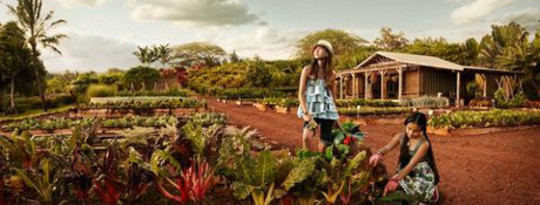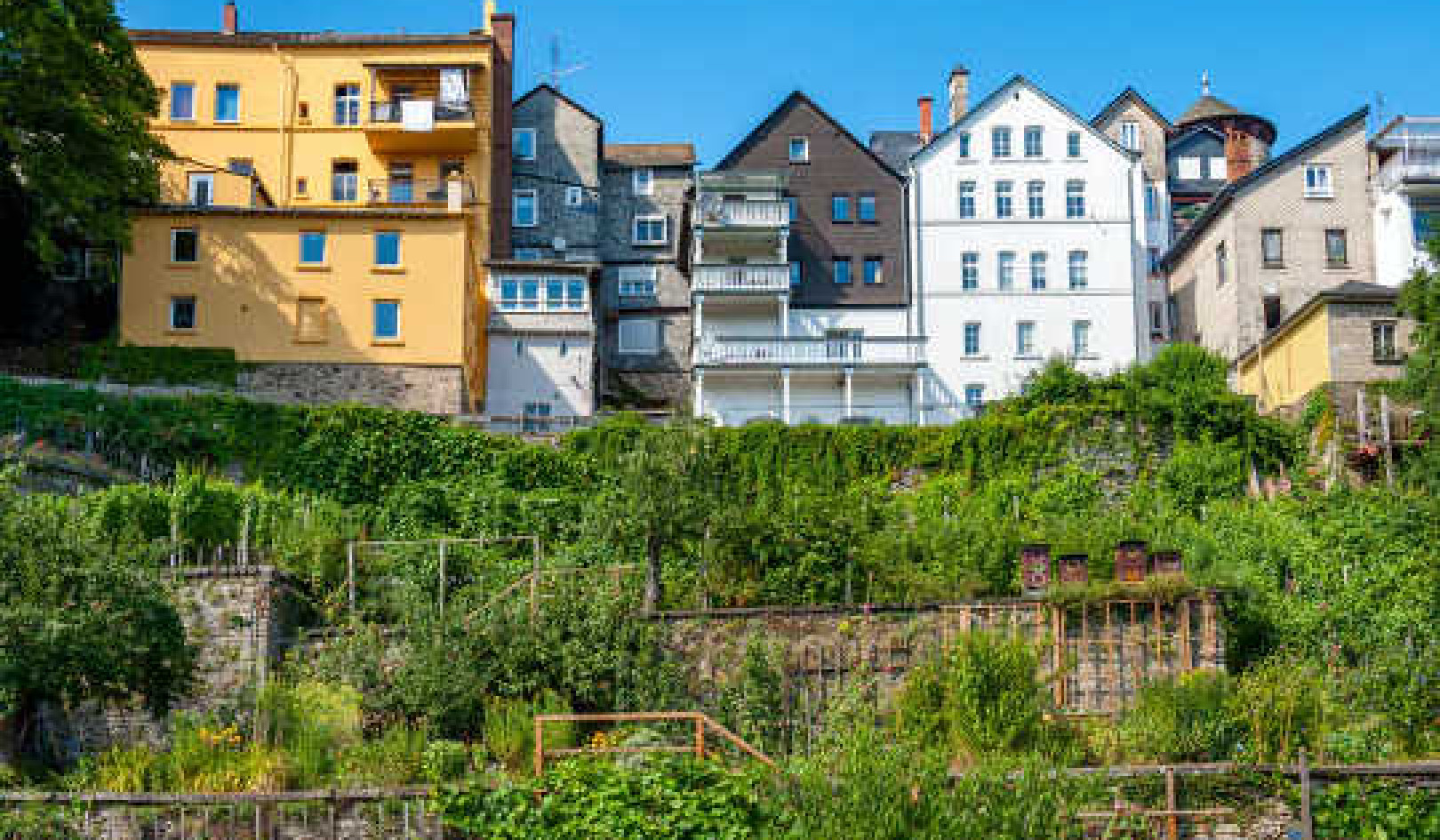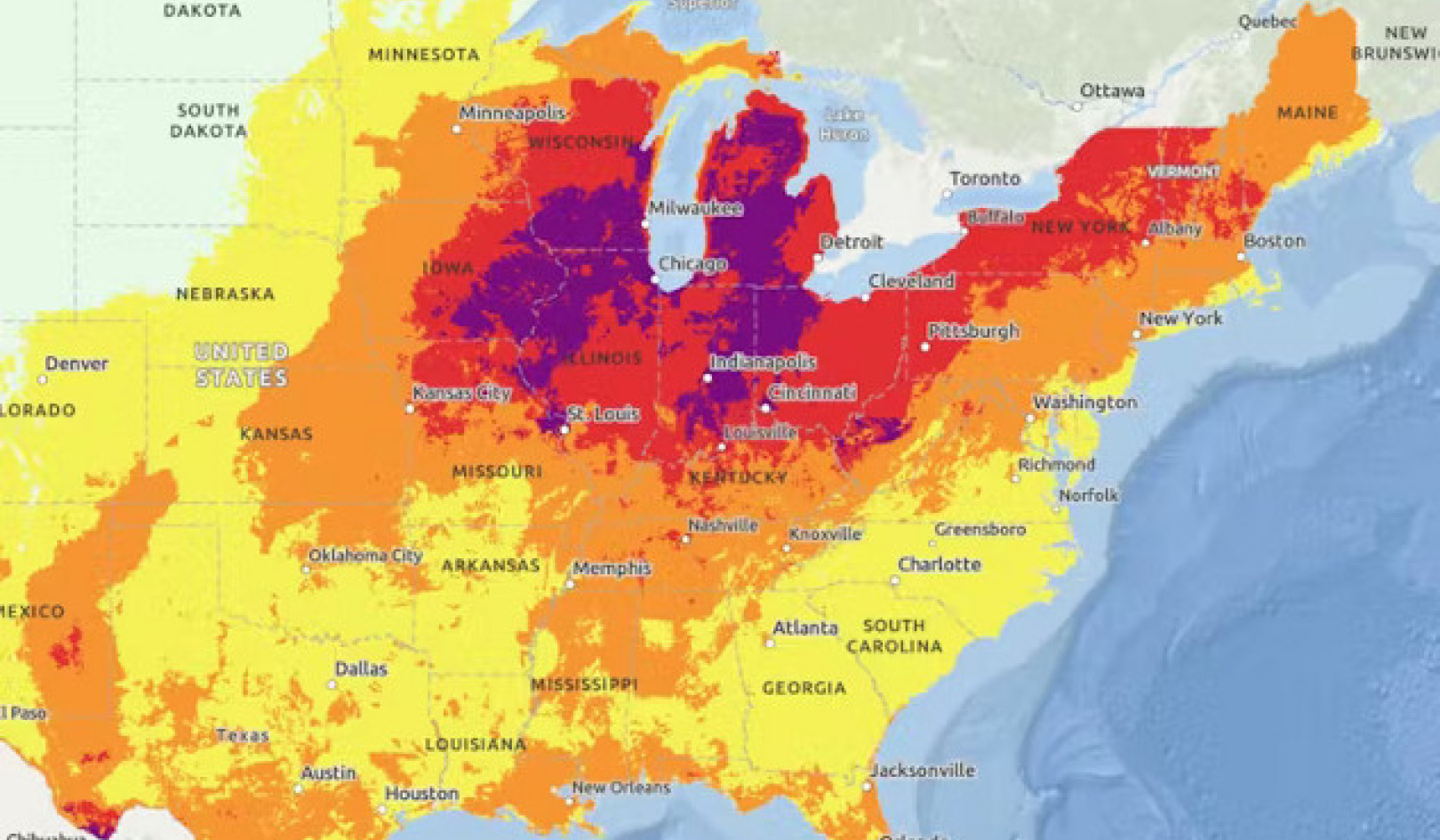
Ever wish you could live at your CSA? Or move to a neighborhood where everyone is as excited about fresh, healthy food as you are? All over the United States people are embracing local food production in an exciting new way. Called 'agrihoods,' this new type of neighborhood serves up farm-to-table living in a cooperative environment. Instead of being built around a pool or tennis court, these housing developments are centered around a farm, often using the sweat-equity of residents to create a sustainable food system for the entire community.
Of course, community gardens, urban agriculture, and cohousing communities are nothing new. But as the rapidly growing crop of agrihoods demonstrates, families are eager to reimagine these collaborative efforts in a new setting -- often at the same or lower prices than a traditional suburban neighborhood.
Although the term is freshly minted, agrihoods are already popping up all over the United States. We've rounded up a dozen established or planned communities so you can learn more about how this trend encourages sharing, collaboration, and a healthier, more environmentally-friendly diet.
1. Agritopia
Located well inside the Phoenix metro area, Agritopia features 450 residential lots along with commercial, agricultural, and open space tracts. All are specifically designed to reduce physical, social and economic barriers to relationships between neighbors. The central feature is a working farm complete with lambs, chickens, a citrus grove and rows of heirloom vegetables.
"By encouraging sharing, making homes more maintenance free, having easy pedestrian access to most of a resident’s needs, and making an adaptable community, our lives can be simplified giving us more time to enjoy friends and family," explain the residents.
2. Serenbe Community
Serenbe is a 1,000 acre community located under 30 minutes from Atlanta’s Hartsfield-Jackson International Airport. The development's four omega-shaped hamlets are carefully fitted into the natural landscape forming an interface between green, wetland and watershed areas of the site and the surrounding sloping hills. Central to all is Serenbe Farms, a 25-acre working, organic farm and CSA which provides organic produce for Serenbe's three on-site restaurants as well as other businesses throughout Atlanta and The Chattahoochee Hill Country.
3. Prairie Crossing
Located in Grayslake, Illinois, this agrihood was designed to combine the preservation of open land, easy commuting by rail, and responsible development practices. In addition to shops, a charter school that emphasizes environmental education and global citizenship, and stables, Prairie Crossing is known for its 100-acre working organic farm which is working to launch the next generation of farmers to grow organic food for the Chicago region.
4. South Village
This community was designed to combine two of Vermont’s most cherished traditions: open space and village living. The agrihood features paths for cycling and cross-country skiing, community gardens, and a 4-acre organic farm that plays a vital role in connecting South Village residents to local food production via a cooperative CSA. Unlike many of the farms we've mentioned, The Farm at South Village boasts a one-acre, 528-panel photovoltaic solar array that produces150kW of carbon-free electricity for the South Village community, the Farm, and the City of South Burlington itself.
5. Hidden Springs
This community in Boise, Idaho, was created around an agricultural heritage and with a small town feel. Created on the site of a 135 year-old farmstead, Hidden Springs offers access to 800 acres of open space. In addition to the Dry Creek Mercantile and restaurant, schools, fire department, and salt water swimming pool, the development centers around an organic farm that produces vegetables and herbs for CSA members and customers of the Mercantile.
6. Willowsford
Located in the heart of Loudoun County, Virginia, Willowsford spans over 4,000 acres and is comprised of four distinctive yet interconnected "villages." More than half of this land is designated to remain as open space under the stewardship of the non-profit Willowsford Conservancy. Out of the other half, 300 acres is used to cultivate more than 150 varieties of vegetables, herbs, fruit, flowers and raise several breeds of livestock -- many of which are distributed to the community through the CSA program and Farm Stand.
7. Kukui'ula
It doesn't take long to see that Kukui'ula is a bit more upscale than most of the agrihoods we've listed so far. But the same principles of community and sustainable agriculture guide daily life in this Hawaiian paradise. Tucked in a valley beside a 20-acre lake, the Upcountry Farm allows members to plunge their hands into the stunning red earth, cultivating bananas, papaya, chard, citrus, herbs, pineapple, arugula and breadfruit for the community to eat.
8. Bucking Horse
Nowhere are citizens more hungry for the supportive ties of community than my own home state of Colorado. That's why local developer Bellisimo, Inc. is planning something new for its next project in the popular foothills town of Fort Collins. Built around the principles of community, environment, education, health and economics, the Bucking Horse project will strive to create new standards for a healthier lifestyle. The 160 acre agrihood will feature a trail system, healthy retailers (think bike shop and yoga studio), community gardens, and a farm-to-fork restaurant that will serve up produce and other edibles grown on site.
9. Skokomish Farms
Skokomish Farms is an environmental community built on a former hay farm in the Puget Sound area of Washington state. The community consists of 18 parcels, each of which is divided into a 5 acre homesite with the remaining 35 acres cultivated under a perpetual conservation farm easement. Agricultural activities are managed by a democratically elected farm manager.
"You'll enjoy abundant healthy organic and natural produce year-round. We plan to cross-pasture grass-fed livestock, and to raise field crops. In the winter some crops will be grown in greenhouses," explains the website.
10. Harvest
Harvest is an 1,150-acre master-planned, mixed-use development in Northlake, Texas that will eventually be home to approximately 3,200 energy-efficient, single-family houses. At its heart is Tassione Farms, a community garden and orchard where residents will learn how to grow fresh, organic produce and embrace a farm-to-table lifestyle.
11. Sendero
This is just one of three unique villages that will eventually make up the 6,000 Rancho Mission Viejo development in San Juan Capistrano, California. Located on 17,000 acres of permanent open space, Sendero residents can choose from a mix of house styles and neighborhoods that wrap around paths, parks, gardens and the Ranch House – the social hub of the village. Down the road, Sendero Farm and the Ranch Marketplace provide easy access to organic vegetables, herbs and flowers grown right on site -- including citrus and avocados.
12. Prairie Commons
Specifically designed with the senior citizen in mind, Prarie Commons will be a pedestrian-friendly development built around a 15-acre lake in Olathe, Kansas. On-site, Tibbet's Farm will transform the existing single-crop operation into a certified organic farm that produces a variety of fruits, vegetables and small-scale livestock. In addition to the farm, a series of community gardens, a farmers' market, cooking school, restaurants and a small grocery market will "reintroduce the heritage of fresh food into a contemporary development."
This article originally appeared on Shareable
About the Author
 Beth Buczynski is a freelance writer and editor living in beautiful Colorado. She loves sharing so much, she wrote a book about it. "Sharing Is Good" is a practical guide to the rapidly-growing sharing economy. It can show you how to save money, time, and resources through collaborative consumption, all while reconnecting with the people and places you love the most! Check it out on Amazon. You can find more of Beth's writing on Care2, Inhabitat, Deskmag and EcoSalon. Stay in touch with Beth on Twitter as @ecosphericblog and @TheSharingBook.
Beth Buczynski is a freelance writer and editor living in beautiful Colorado. She loves sharing so much, she wrote a book about it. "Sharing Is Good" is a practical guide to the rapidly-growing sharing economy. It can show you how to save money, time, and resources through collaborative consumption, all while reconnecting with the people and places you love the most! Check it out on Amazon. You can find more of Beth's writing on Care2, Inhabitat, Deskmag and EcoSalon. Stay in touch with Beth on Twitter as @ecosphericblog and @TheSharingBook.
Recommended book:
Sharing is Good: How to Save Money, Time and Resources through Collaborative Consumption
by Beth Buczynski.
 Society is at a crossroads. We can either continue on the path of consumption at any cost, or we can make new choices that will lead to a happier, more rewarding life, while helping to preserve the planet for future generations. Collaborative consumption is a new way of living, in which access is valued over ownership, experience is valued over material possessions, and "mine" becomes "ours," and everyone's needs are met without waste. Sharing is Good is your road map to this emerging economic paradigm.
Society is at a crossroads. We can either continue on the path of consumption at any cost, or we can make new choices that will lead to a happier, more rewarding life, while helping to preserve the planet for future generations. Collaborative consumption is a new way of living, in which access is valued over ownership, experience is valued over material possessions, and "mine" becomes "ours," and everyone's needs are met without waste. Sharing is Good is your road map to this emerging economic paradigm.
Click here for more info and/or to order this book on Amazon.
























